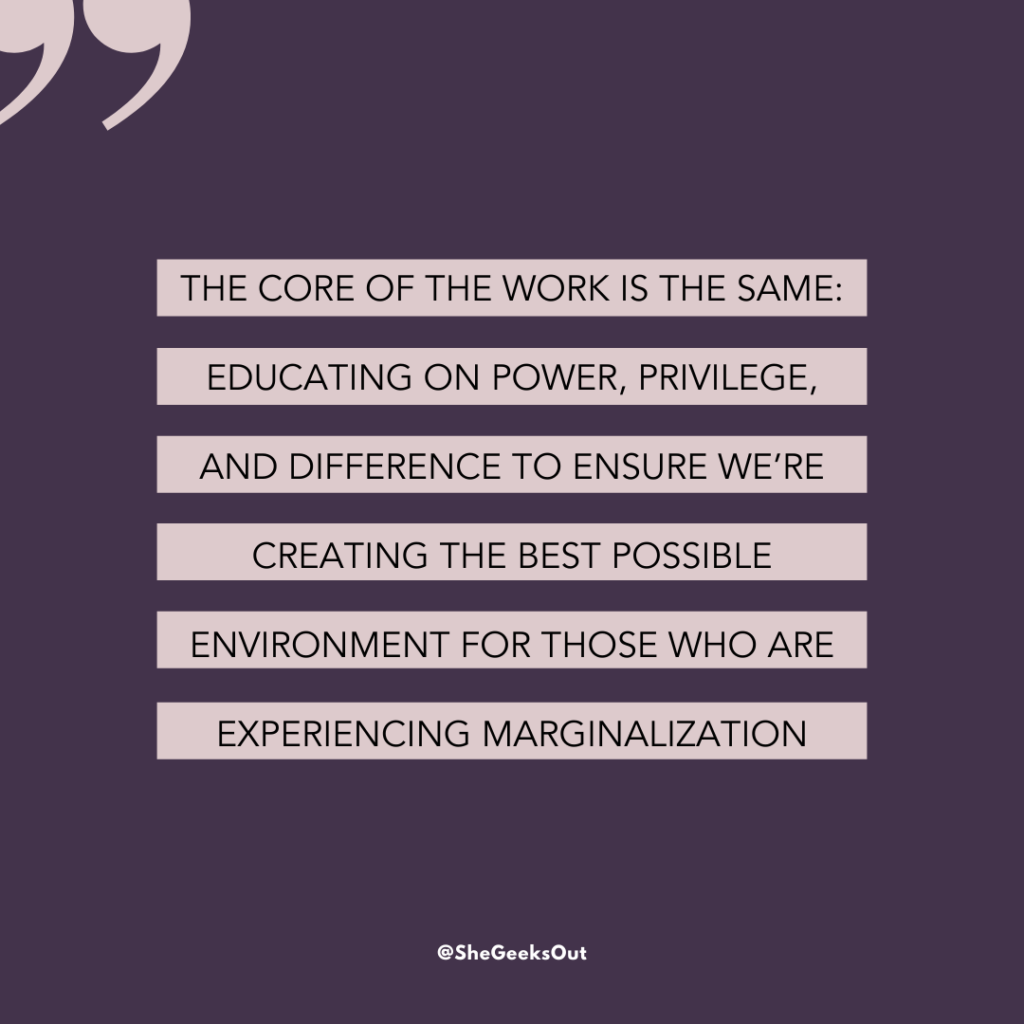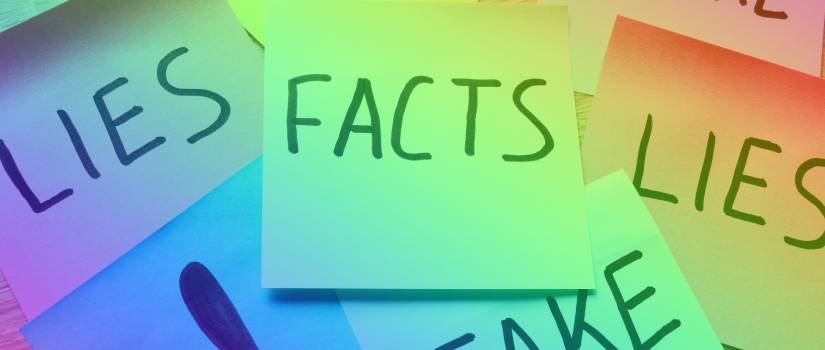Diversity, Equity, and Inclusion (DEI) has been joined by Critical Race Theory (CRT) in the zeitgeist these days, and we’d like to spend some time clearing up some myths and misconceptions.
Diversity, Equity, Inclusion:
You might be wondering, “what is DEI?” DEI is a framework we use for abolishing inequities in the workplace. DEI isn’t a one-and-done solution to fix any problems that may exist. DEI is an all-encompassing concept that explores how we acknowledge, embrace, and support all members of our various communities. And most importantly, DEI is not the same thing as Critical Race Theory (see below).
The goal of DEI as a framework in the workplace is to give employees the tools to think about how we all contribute to the systems we’re in. The hope, the goal, and the dream for DEI work is to start to understand where barriers came from and how we can start removing them for those who fall into historically marginalized groups. We’ve also written in the past about the specific terms for diversity, equity, and inclusion.
Critical Race Theory:
Critical race theory, or CRT for short, is an academic framework which explores and critiques American history, society, and institutions of power (including but not limited to government and legal systems) from a race-first perspective, specifically BIPOC. It most recently entered the spotlight following the murder of George Floyd and the 2020 summer of racial uprising, but we see that CRT is often misunderstood and referred to incorrectly. CRT was born from feminist legal theory movements and critical legal studies in the 1970s. Scholars and lawyers such as Derrick Bell, Richard Delgado, and Kimberlé Crenshaw developed this theory for legal studies graduate programs. The root of the argument against CRT being taught in K-12 schools is connected to conservative concerns over the growing awareness of racism as a systemic issue in this country. It’s worth remembering that this is also connected to efforts to ban “diversity training” for government employees. Most recently, this concern was raised during the confirmation hearings of Judge Ketanji Brown Jackson with Senator Ted Cruz bringing up CRT multiple times.
So let’s unpack some of the most common myths we hear around DEI work:
Myth 1: CRT and DEI are the same
While CRT and DEI may have similar tenants, they are not the same. A central focus of each is the concept of intersectionality, however CRT is much more about law and systems than DEI. The CRT movement has led to a deeper understanding of how race has been constructed in and has influenced the United States, specifically our understanding of the legal system, first and foremost. It’s a way of thinking to understand the problem in order to fix it for BIPOC. Critical Race Theory is the framework to look, examine, and explore how law, specifically, was or wasn’t working for Black, Indigenous, and Asian people here in the United States despite the law saying it would. As Kimberlé Crenshaw said, “the law isn’t just a neutral referee and is less about being on our [Black folks] side and it needs to do better for us.”
Myth 2: DEI is a “one and done” type of initiative
Sometimes we hear that one workshop on a DEI topic will fix “all the things”. In reality, DEI initiatives will only work if they’re ongoing and intentional. One workshop on unconscious bias or allyship won’t completely change the way individuals understand themselves or the systems they work in. What it can do is start the conversation about how individuals and systems intersect. DEI initiatives are starting points for individuals to understand themselves, but also opportunities for teams and companies to begin action planning and employing strategies on how to combat some of our own biases.
Myth 3: Talking about DEI will make things worse or amplify inequities or inequalities
Oftentimes, people fear that when they start talking about inequity, it’ll make things worse. We’ve found that when people start talking about injustice, it illuminates systemic issues in the workplace and allows teams to begin to unravel these harmful systems. It’s important to unearth the ways different people experience the (seemingly) same place, such as a physical office space with open-air cubicles, gendered bathrooms, or fast-paced meetings without an agenda shared. It’s valuable to talk about individual differences, especially at work, so we can abolish inequity, rather than pretend like it doesn’t exist. It might be uncomfortable and it may require our attention to be paid to work other than what’s obvious on the balance sheet, but in the long run, it will reap significant rewards and create opportunity for those voices who are typically left behind to have one.
Myth 4: DEI is only focused on race and gender
DEI is intersectional. It’s important to understand how all of our different identities (race, class, gender, age, ability, sexuality, etc) intersect and make us who we are in relation to the systems in which we live. For example, how would we, as individuals, move through the world if we were say, a Black, queer, disabled person; or a South East Asian trans man; or a white, Jewish, non-disabled person; or a very light skinned Muslim, neurodivergent man? Our unique combination, or intersecting, social group identities (of which race and gender are some, but certainly not the only two), along with the unique experiences we have make us who we are. That also means that individuals experience the workplace differently than someone with a different identity. DEI in the workplace is a way by which we explore those differences and work to abolish barriers to success.

Myth 5: DEI is a fad or trendy
This myth comes up frequently when individuals and/or organizations view DEI work as an ‘add-on’ or ‘nice-to-have’, as opposed to an imperative. DEI is most effective when it’s embedded into your organization’s DNA. DEI work on a conceptual level has been around for many years and has evolved, which is very much the nature of this work. When ‘diversity education’ became more mainstream in the education space during the 1960s and 1970s, it was called multicultural education, whereas today it is called by several names, including ‘inclusive excellence’, ‘social justice’, ‘ethnic studies’, and more. Over the years, the name for how we talk about diversity has evolved and changed but the core of the work is the same: educating on power, privilege, and difference to ensure we’re creating the best possible environment for those who are experiencing marginalization. The sentiment and the values of the work haven’t changed, but shifted to meet the needs of the time.
Myth 6: DEI work is limited to HR: recruiting and hiring
While many organizations find their way into DEI work by examining their recruiting and hiring practices, DEI is bigger than Human Resources or People Ops. DEI is a lens through which the entire organization can view and create a more inclusive employee experience because it’s not simply enough to recruit and hire the best candidates, we want to retain them and have them feel as though they belong. Companies can also look at DEI beyond their company, at supplier diversity, how they interact with the community, and with the environment. These are all critical factors when thinking about how to create a truly diverse, equitable, and inclusive work environment.
Hopefully now you have a better understanding of DEI and CRT as distinct concepts. Have you heard any of the above myths or misconceptions about CRT or DEI? How do you go about debunking those? Let us know!
Are you ready to find out more about bringing our impactful workshops and facilitators to your workplace? Learn more about our workshops and how we can help your team. To see more videos about DEI in the workplace, follow us on YouTube!
